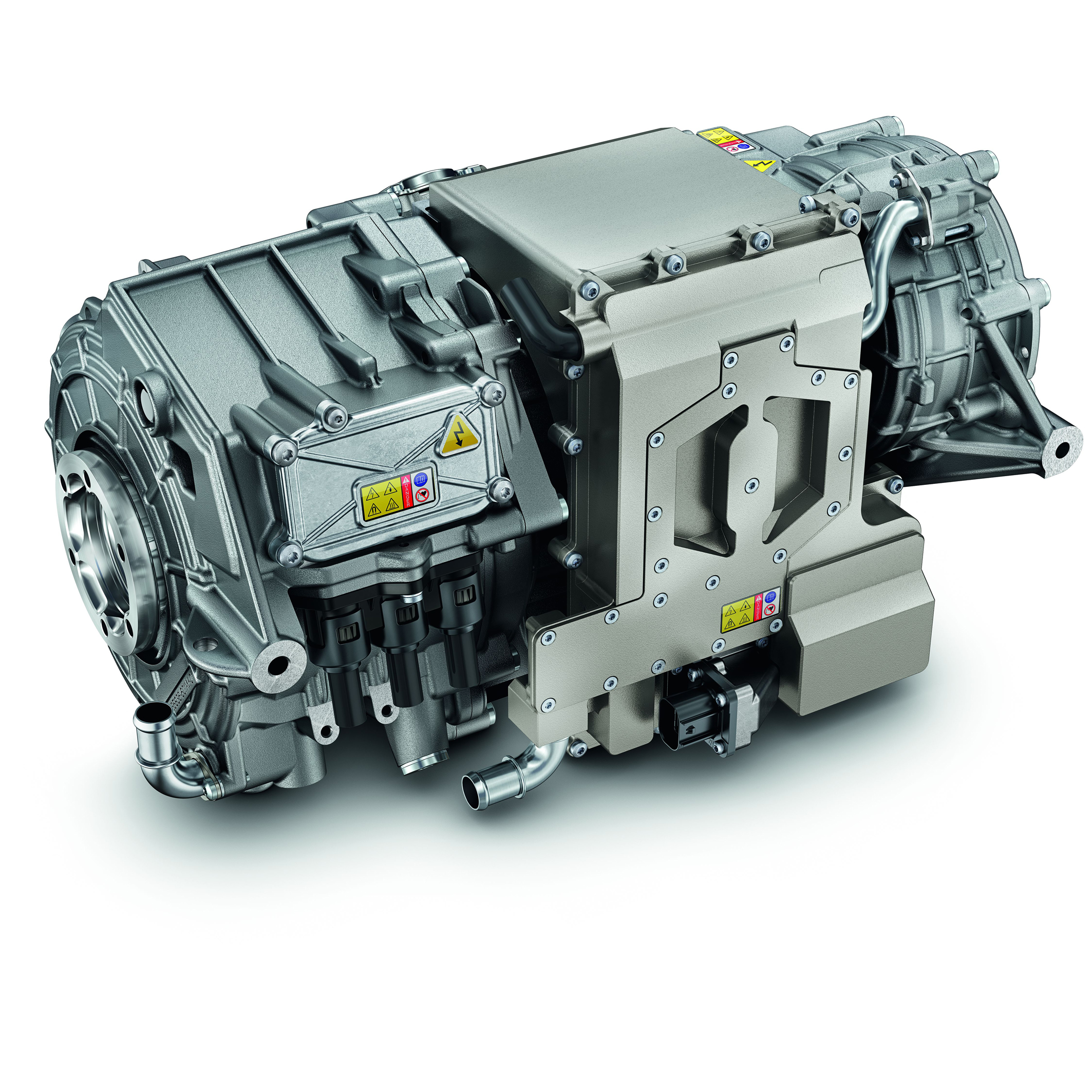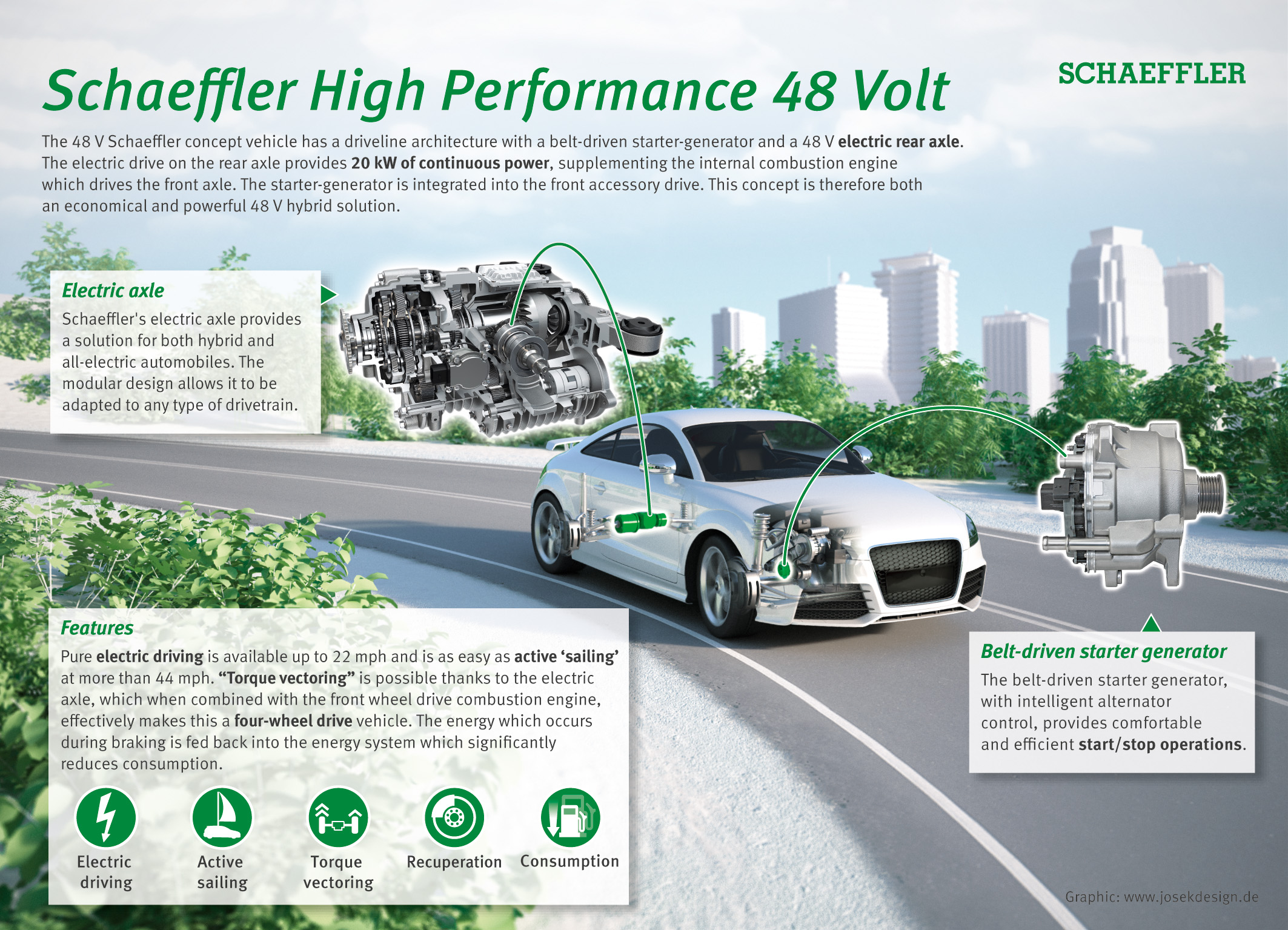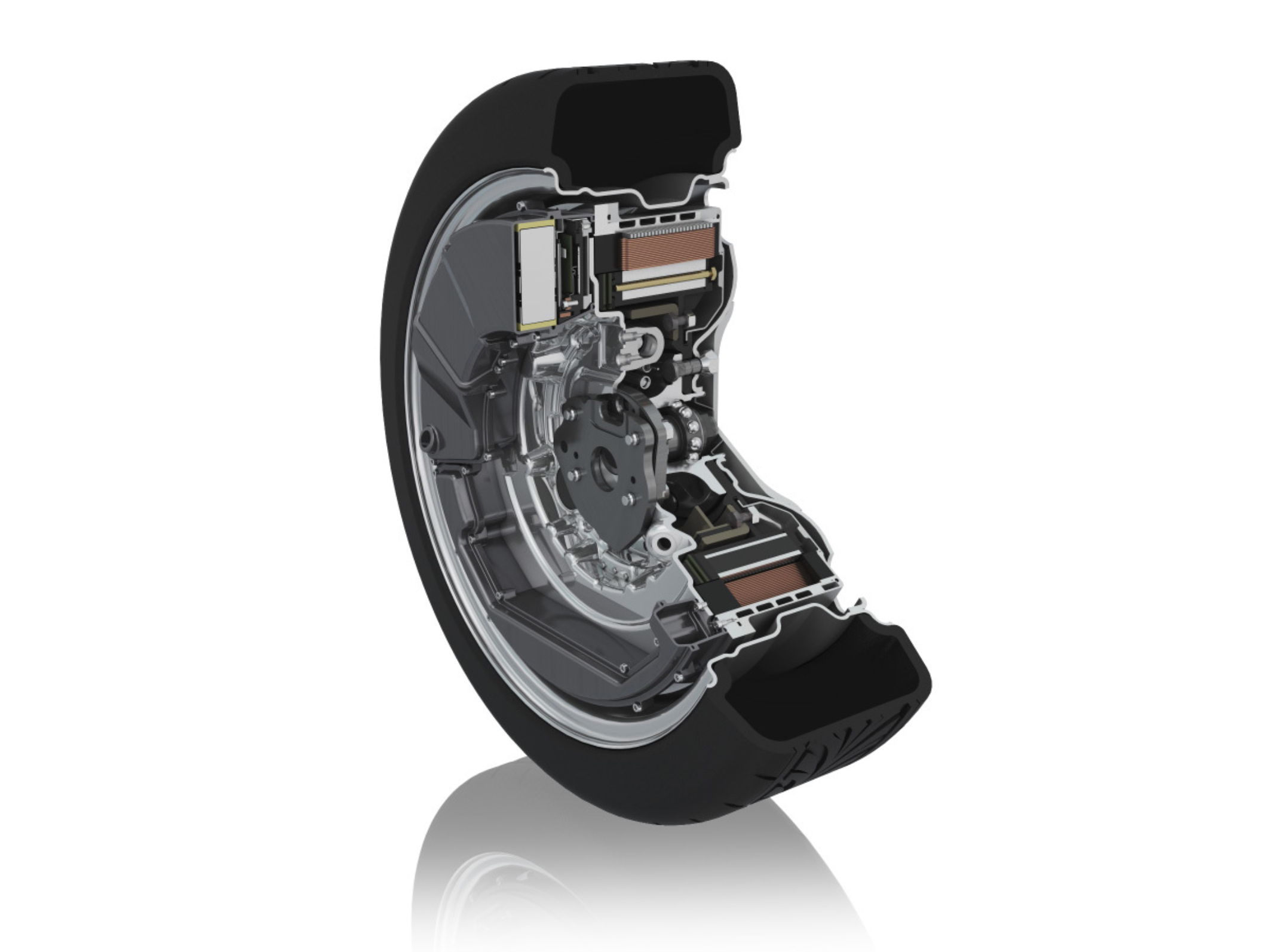Reducing fuel consumption and emissions, increasing comfort and driving dynamics: hybrid drives play a significant role in these development goals. Mild hybrid drives with 48 V technology meet these demands at a comparatively low cost. A good example is the “Schaeffler High Performance 48 Volt” concept vehicle with a Schaeffler electric rear axle that assists the internal combustion engine driving the front axle. Schaeffler also has innovative solutions for purely electric drive concepts, such as the supplier’s wheel hub drive, to demonstrate the possibilities of a complete redesign the bodywork and interior.
Hybrid technology is an important building block in designing more efficient internal combustion engines. The powerful 48 V mild hybridization is a trailblazer in hybridization, as it is more economical than plug-in hybrids with high voltage technology. The location of the electric motor has a major influence on the functionality and performance of 48 volt hybrids. There are a total of five different installation positions, known as P0 to P4.
Until now, the dominant arrangement has been the P0 in which the electric motor is located in a conventional belt drive. Schaeffler has also developed P2 architectures using 48 V technology. In this design, the electric motor is located between the internal combustion engine and the transmission. This allows driving modes, such as recuperation, electric sailing and moving off, to use only electric power and not engage the internal combustion engine.
Schaeffler High Performance 48 Volt
During the North American International Auto Show, Schaeffler is also presenting the “Schaeffler High Performance 48 Volt” concept vehicle. “This technology closes the gap between standard 48 V P0 systems and high voltage hybrid drives,” says Jeff Hemphill, Chief Technology Officer for Schaeffler Americas.
In Schaeffler’s new 48 volt demonstrator vehicle, an electric rear axle supplements the front axle drive which comprises a conventional internal combustion engine and belt-driven 48 volt starter generator. The arrangement is a completely new combination of the conventional P0 topology and an electric axle in a P4 arrangement. The electric motor and the associated power electronics are integrated into a single unit on the rear axle. Twenty kilowatts of purely electric power is thus permanently available from the 48 volt axle drive. The Schaeffler electric axle produces a starting torque of up to 2,000 Nm.
The 48 V architecture allows different driving strategies to be selected in order to reduce CO2 emissions and increase driving dynamics, such as emissions-free, purely electric driving up to 35 km/h in areas where traffic is restricted. The vehicle can also sail at speeds of up to 70 km/h. The electric axle therefore allows a constant speed to be maintained. In the WLTC driving cycle, the majority of braking energy is recaptured as electrical energy and stored in the heavy-duty battery.
“Schaeffler’s technology offers significant potential to reduce consumption and emissions through local emissions-free driving and the recuperation of braking energy,” says Hemphill.
But the concept offers more: a further feature of the integral two-speed electric axle is the possibility of “torque vectoring” or distributing the drive forces to specific wheels. Both the agility and safety improve in vehicles driven in this way. When combined with front wheel drive, the electric axle effectively provides the vehicle with four-wheel drive.
New drive concepts – the wheel hub drive vision
Slim 48 V hybrid concepts for economical electrification of the powertrain are not Schaeffler’s only development projects. Emissions-free intermodal and urban mobility for tomorrow are also on the agenda. The company has another highlight in this area in the form of the wheel hub drive. Schaeffler’s “E-Wheel Drive” shows how the drive technology can be relocated to the wheels.
In wheel hub drives, all the necessary components, such as the electric motor, the power electronics, brakes and cooling, are located within the wheel rim. This saves space that can be used for new interior design concepts. The wheel hub drive has an obvious application in self-driving taxis or nimble, autonomously driven passenger cars which transport the residents of large cities over short distances in the future. Developers also have their sights on new “people movers.” These are ultra-compact, autonomously driven vehicles which take passengers the “last mile” home after using traditional public transport systems.
“We have taken the predevelopment of the E-Wheel Drive to the point where we can now start to incorporate it into real-life projects,” said Sebastian Wielgos who leads the E-Wheel Drive development program at Schaeffler.
Source: LuK





















Is it possible to make a prototype or a single exemplary car starting from a standard car using your belt-driven starter generator and rear axle 48V mehv?